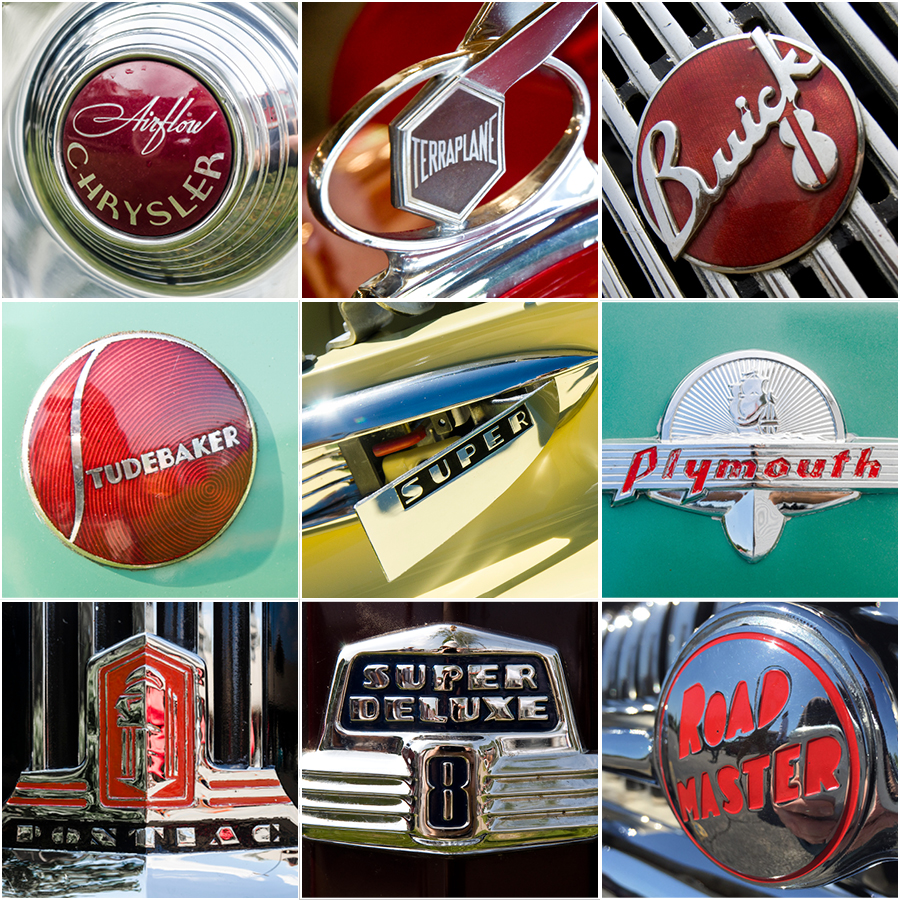I’m following up my twelfth edition of my series on automotive type with a wider range of truck badges. For part thirteen, I’m featuring badges appearing on everything from sport-utes, to commercial delivery trucks, to big rigs. Even with purely utilitarian vehicles like the 1952 Dodge and 1958 Divco delivery trucks, the type treatments have loads of character. Wouldn’t the Divco logo look great on a hat?
A couple of my favorites are the Peterbilt and the 1977 Dodge Street Van. The Peterbilt mark has one of my all-time favorite scripts of any logo. The Street Van badge just screams 1970s, and yet I’ve seen an almost identical style show up in a number of recent lettering designs.
If you’re interested in digging deeper into badge type design, check out writer and type expert Steven Coles’ excellent Tumblr page, Chromeography.
Interested in a print of one of my badge photos? Visit my store and place an order.
Top row, left to right: 1952 Dodge Panel Delivery, Peterbilt Semi. Second row, left to right: 1972 Chevrolet, 1977 Dodge Tradesman B200 van. Third row, left to right: Autocar automotive hauler, 1958 Divco delivery van, International Scout II. Bottom row, left to right: 1962 International Scout, 1972 Ford Bronco, 1963 Ford Econoline truck.


